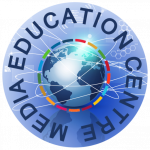 First, media pedagogy is focussing more on the process than on the content, the goal being to memorize events and morphologies of the evolution of mass media means or to develop skills for creating presentation programmes. It is focussing on developing critical thinking competences as to the influence exerted by media messages, whatever its nature, printed or electronic. This process implies problems that pertain to a superior thinking – learning to identify key concepts, to realize the relationship between several ideas, to raise pertinent questions and give adequate answers. These skills, competences are necessary to lifelong learning in a media cultural setting and must be incorporated in the class curricula, in general, not only in certain subject matters (literature, mathematics, history, etc.).
First, media pedagogy is focussing more on the process than on the content, the goal being to memorize events and morphologies of the evolution of mass media means or to develop skills for creating presentation programmes. It is focussing on developing critical thinking competences as to the influence exerted by media messages, whatever its nature, printed or electronic. This process implies problems that pertain to a superior thinking – learning to identify key concepts, to realize the relationship between several ideas, to raise pertinent questions and give adequate answers. These skills, competences are necessary to lifelong learning in a media cultural setting and must be incorporated in the class curricula, in general, not only in certain subject matters (literature, mathematics, history, etc.).
Second, media literacy education expands the concept of “text” to include not just written texts but any message form — verbal, aural or visual (or all three together!) — that is used to create and then pass ideas back and forth between human beings. Full understanding of such a “text” involves not just deconstruction activities — that is, taking apart a message that already exists — but also construction activities — learning to “write” their opinions and ideas with the wide range of multi-media tools. The last one represents an activity now available to any young person growing up in a digital world.
Third, media literacy is characterized by the principle of “inquiry” — that is, learning to ask important questions pertaining to the perception of media content that one sees watches or reads. Such questions refer to: trusting and verifying information sources (e.g. “Is this new scientific study on diet valid?”); selecting subliminal commercial information (e.g. “Why does that commercial drink keep appearing in the background, in the movie?”); identifying influences exerted by the transfer authorship (e.g. “What does it mean when the favourite football player talks about or appears with a certain commercial brand?”).


